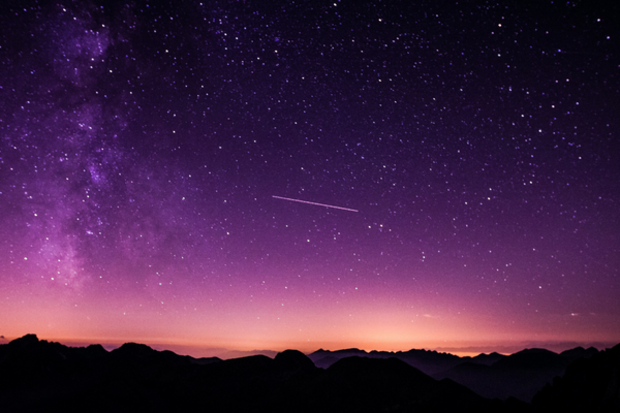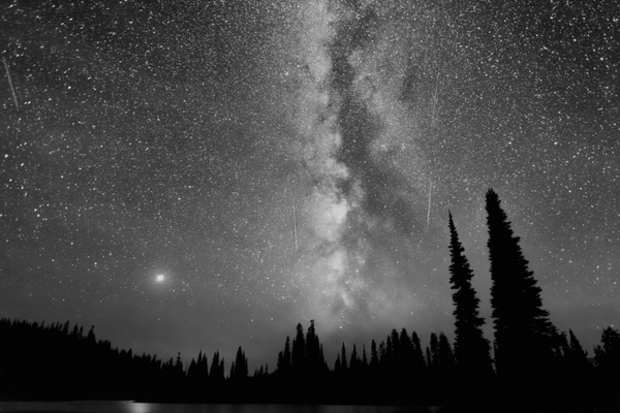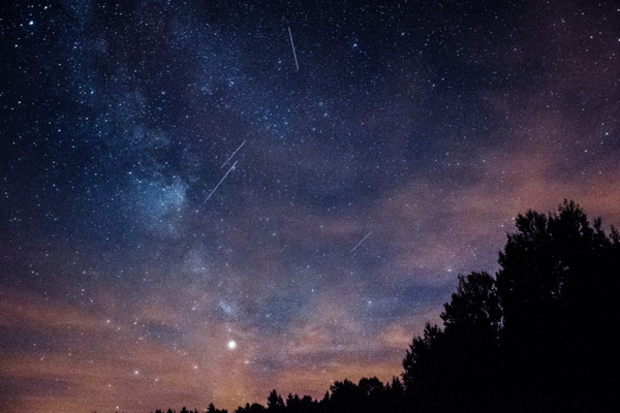Calling All Stargazers! The Perseid Meteor Shower Should Be Visible This Weekend

There are all kinds of celestial events that occur around us and they are all a treasure to witness. Solar and lunar eclipses, blood moons, super blue moons, comets and meteor showers are some of the more well-known events. Meteors, or more commonly known as "fireballs" or "shooting stars," and meteor showers occur at generally the same time each year due to the Earth's orbit. Watching these showers is quite a sight to behold, and could prove to be slightly tricky, unless you know where to look!
The question is though, when do these specific events take place? Look no further! We have a comprehensive list of the next meteor shower in 2023 and all those that follow.
Related: When Is the Next Blood Moon?

Unsplash
What Is a Meteor Shower?
Cosmic debris in space called meteoroids enter Earth's atmosphere as it orbits and they burn up, causing meteors. These meteors seemingly come from the same origin point in the night sky and are observable to us as a meteor shower, or when multiple meteors occur at the same time.
Another aspect of meteor showers, or even of a singular meteor, is called a meteorite which is a meteor that remains intact after the burn through the atmosphere and eventually hits the ground.
Related: Stargazing Adventures for Families With Kids

Unsplash
When Is the Next Meteor Shower?
The next meteor shower is technically taking place right now—July 17-August 24, and is called the Perseid Meteor Shower.
Just after 12:00 a.m. ET on August 13 is the best time to view this fast-moving meteor shower, although it should become visible starting at 3 p.m. on the 12th.
Related: Awe-Inspiring Photos of the 2013 Perseid Meteor Shower

Unsplash
Meteor Shower Dates in 2023
Here's what to expect throughout 2023.
December 28-January 12: Quadrantids Meteor Shower. Although it is now too late to view this shower, the opportune time to have seen it was the evening of January 3 for North Americans. This meteor shower averaged about 25 meteors per hour.
January 31-February 20: Alpha Centaurids. This shower had bright meteors, but there were only about five or six an hour and they were very difficult to spot. The best vantage point was from the East Coast on February 8 around 4:40 a.m. ET.
February 25-March 28: Gamma Normids. Viewing this shower was the easiest on the East Coast from 12 a.m. ET on March 14 onward, so long as you had a clear view of the southern horizon and a rather dark place to view it from. These meteors were very difficult to see and there were only about five meteors per hour.
April 14-30: Lyrid Meteor Shower. The Lyrid shower should be much easier to spot than the Centaurids or the Gamma Normids. Averaging around 18 per hour, these meteors will be moving at a slower pace and once again will be best seen from the East Coast—especially on the night of April 22 as it begins to get dark. At this point, the moon will be waxing crescent, so it should not interfere with the visibility of this shower.
April 19-May 28: Eta Aquarid Meteors. A couple of hours before dawn on May 6 will be your best bet to see these meteors, but be on the lookout! The moon will be full and this shower will be moving at a very fast pace, making them even more difficult to see even though there could be 50 per hour. Look to the eastern horizon two and a half hours before sunrise to try and get a glimpse of the Eta Aquarids.
June 2-July 2: June Bootids. Moving at a slower pace and boasting bright meteors, the June Bootids will be most visible on June 27 shortly after midnight. This shower's radiant will be high in the northwest but the amount per hour is difficult to pinpoint. In the past, the only times this shower has been especially visible were in 1998 and 2004, so you may be disappointed with this shower as well.
July 12-August 23: Southern Delta Aquarids. While moonlight will be low during this time, this shower will be rather faint which will make it difficult to see. Look toward Jupiter on July 28 around 1 a.m. ET for your best bet, although meteors may be visible beginning at 11:30 p.m. ET the previous evening. This shower will be moving at a decent pace, and should average around 25 meteors per hour.
July 17-August 24: Perseid Meteor Shower. Just after 12:00 a.m. ET on August 13 is the best time to view this fast-moving meteor shower, although it should become visible starting at 3 p.m. on the 12th. Since the moon will be waning crescent it should be fairly easy to view if you look to the north and the east, especially since there will be an estimated 100 meteors per hour.
September 5-September 21: September Epsilon Perseids. Viewing this shower could prove to be a feat as it's fast-moving, not very bright and is only estimated to have around five meteors per hour. If you do want to test your luck, the best time to see the September Epsilon Perseids should be September 9 around 10:30 in the evening, although meteors will be most visible beginning at 7 p.m. ET, looking to the north and the east.
October 2-November 7: Orionids Meteor Shower. The night of October 21 around 11 p.m. ET will be the best night to see this meteor shower. The maximum viewing for this shower will begin at 8 p.m. ET. Originating from Halley's Comet, this shower is fairly dependable. This year, however, it may prove to be a bit lackluster. These meteors will be fast-moving, show about 20 per hour and will be in the southeast and northeast.
November 6-November 30: Leonids Meteor Shower. This is a fast-moving and bright meteor shower, with your best bet for visibility being at 12:00 a.m. ET on November 18. There is potential for visibility to be great on November 21 as well, at 7 a.m. ET. Moonlight should not interfere with either date as it will be waxing crescent on the 17th and below the horizon on the 21st.
December 4-December 20: Geminid Meteor Shower. At an estimated 150 meteors per hour, this shower could prove to be quite impressive. Moving at a steady pace and fairly bright, this shower should be most visible on December 14 during the mid-evening in the northeast sky. Another great aspect of this meteor shower is that it is most often very colorful!
Up Next: When Is the Next Eclipse?
